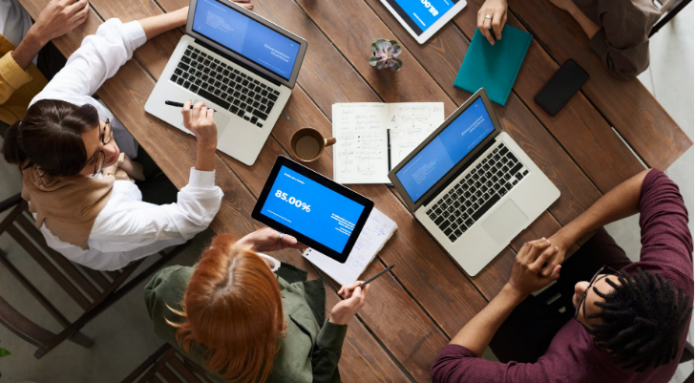Laptops are useful in that they are portable computing devices that allow for one to bring work to virtually any space. They can run off power outlets and usually have batteries that allow them to be used in places where an outlet is not available.
Laptops are similar to desktop computers in that they perform the same functions. The only difference lies in hardware because laptop parts are basically miniaturized versions of a PC. This makes it more practical for mobile or portable use.
Now referred to as a notebook, the term “laptop” was introduced to the public in 1983. The change in terms was made as the computing devices got smaller and more portable.
About Gavilan SC
One of the first laptops was a small mobile computer called Gavilan SC. This was the first computer to be marketed as a laptop. It was a pioneering device in that it introduced the now-famous clamshell design wherein the screen closes over the built-in keyboard.
Since it was such an amazing invention, it had to have an amazing price. The Gavilan SC was priced at 4,000! It had a floppy disk drive and ran on the DOS operating system, which is now virtually non-existent with the advent of easy-to-use graphics interfaces. It had an internal modem and a compact printer that was attached to the rear as an optional add-on.
Gavilan SC was probably the first laptop to ever run on batteries, with a claimed usage of 9 hours per charge. This isn’t surprising since it probably didn’t do much computing compared to today’s notebooks that process so much that it can drain its batteries in 3 to 4 hours.
Like the telephone did when it was made available to the public, the concept of mobile computing has changed the way the world does business. For the first time in 1981, businessmen had the ability to bring important data with them outside the office.
However, at the time, it was difficult to synchronize the data between laptop and PC since laptop standards did not meet the same standards as IBM personal computers.
After all, IBM PCs were, at that time, the standard platforms. That all changed with the introduction of the Compaq Portable which processed data exactly as its IBM PC counterpart.
Today, there are laptops (also referred to as notebooks or notebook computers) that can be as powerful as and even more powerful than desktop PCs.
Generally, of course, they are weaker than desktop computers because they are built to reduce energy usage and reduce heat produced within its casing.
Most laptops today have screens of about 12 to 15 inches in size with displays that reach resolutions of 1024×768 pixels and higher in some models. Storage comes in the form of hard disks that are significantly smaller but hold much more data than ever thought possible.
Current laptop models also run on lithium-ion batteries, replacing the older nickel-metal-hydride batteries. Lithium-ion batteries provide lengthened computing times and charging cycles are greatly improved as they last much longer than the older batteries do.
Typical battery life is between 2 to 5 hours depending on how the laptop is used and how often the battery is charged. Because of these current specs, more people are attracted to the idea of mobile computing as it increases productivity in and out of the workplace.

